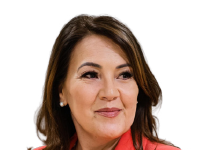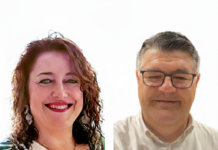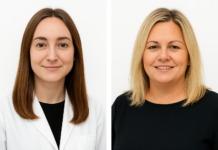Elena Arcega Rabadan
President of the Association for the Fight against Inflammatory Biliary Diseases (ALBI) Spain
As a patient with primary biliary cholangitis (PBC) and president of ALBI Spain, could you tell us about your experience until you were diagnosed? What barriers did you encounter along the way, and do you consider that these difficulties are common in other countries with which you have contact through the association?
EA: The truth is that my diagnosis process was not like that of most people. I was «lucky» enough to suffer a deep vein thrombosis, which led to more extensive tests. The changes were so obvious that the diagnosis came quickly. I was itchy and thought, «I must be allergic to bed sheets, who knows why». I felt tired, but I put it down to routine, to just «being tired». I had learned to live with it all without questioning it. It was only after the diagnosis, as I learned more about the disease, that I realised that I had had it for a long time without knowing it.
In general, the problem with diagnosis in this disease is that it is often delayed. The tests may seem to be compatible with other things, and they say: «let’s see if it’s fatty liver» or «maybe it’s alcohol». Unfortunately, there are still doctors who, when faced with liver disorders, assume that there is high alcohol consumption. This bothers us patients deeply, because we feel that we are being judged without knowing our reality. But it is also understandable: the analyses can be confusing, and many professionals are not familiar with this disease, although fortunately it is becoming more widely known, even though it is still a minority disease.
Another factor that greatly delays diagnosis is when the initial symptom, such as pruritus, brings you to the dermatologist. You start with one cream, then another, and so time goes by without anyone looking any further. This is not unique to Spain; it happens all over Europe. The time to diagnosis usually ranges from two to four years, as with many rare diseases. In my case, as I said, it was atypical. But the most important barrier we keep seeing is the same: lack of knowledge in primary care. It is understandable that they are not aware of all rare diseases, but it is essential that they suspect and refer early to a specialist.
Fatigue, like pruritus, is a profoundly disabling symptom and continues to receive neither the attention nor the recognition it deserves
PBC is a chronic, progressive and potentially disabling disease. How has it impacted on your quality of life and that of other patients with whom you have shared experience? What needs remain unmet today, both in clinical and social terms?
EA: The disease has two main symptoms that particularly affect us: pruritus and fatigue. I start with pruritus because it is easier to explain. Itching is extremely unpleasant and can be disabling, especially at night. Yesterday I was talking to a patient who told me: «my day starts at two o’clock in the morning, when I can no longer sleep because I keep scratching». Added to this are poor sleep quality and the numerous problems that result from insufficient rest. Itching can even cause skin wounds. It is a symptom that, in my view, is not as highly valued as it should be, despite the enormous impact it has on quality of life.
However, it seems that new treatments could offer better results, and we are hopeful that this will move forward and we will finally get this symptom under control. Then there is fatigue, which in PBC has a very particular nature. It’s as if you suddenly run out of strength. The day becomes shorter, because you do anything and you need to stop. Often, you know in advance that an activity is going to knock you out and that you’re going to need a day or two to recover. We have to learn to dose our energy. I often refer to the «spoon theory», popularised by a woman with rheumatoid arthritis: each action consumes a «spoon» of energy, and you have to work out how many you can spend per day.
At first, you tend to normalise it. You think: «I’m tired, it must be because of what I’ve done». You don’t realise that fatigue is part of the clinical picture. It is surprising when you start talking to other people and they all tell you the same thing. Also, there is an important bias: most of the patients are women, mostly in middle age, many going through the menopause. And what we usually hear is: «you are tired like all women your age». But it’s not the same. You see that the people around you have an energy that you don’t have. They go out for dinner, for drinks, for socialising… and you just don’t make it. But, again, you end up normalising the symptom: «well, it’ll be my turn». And it shouldn’t be like that. Fatigue, like pruritus, is a profoundly disabling symptom and continues to receive neither the attention nor the recognition it deserves.
In the context of rare diseases, access to innovative treatments is often unequal. Do you think that access to therapies for PBC varies significantly between countries? Have you identified notable differences in terms of funding, availability or drug approval times?
EA: We experienced a complicated situation in this disease when a second-line treatment was negatively reassessed by the European Medicines Agency (EMA). This created a very difficult period for patients. In Spain, however, we were somewhat fortunate: patients who were already receiving this treatment were allowed to continue with it, as long as the doctor considered it to be beneficial. It was managed as a medicine for foreign use.
In other countries, such as the United States and the United Kingdom, the same treatment continued to be prescribed as normal. In Europe, however, the decision was more drastic: it was completely withdrawn.
After that, two new treatments arrived. One was approved in September and the other, if I remember correctly, in January. The truth is that sometimes my memory fails me (mental fatigue is also one of the symptoms of our disease) and I find it difficult to remember dates with precision. What is true is that, although the EMA approved both drugs, in Spain the process to final approval and pricing was slower.
In our country, these two treatments were finally processed through an emergency procedure. Fortunately, they are now approved and available, but we have noticed that the process was more agile than in other cases precisely because we were coming from a critical situation: we had been left without a viable therapeutic alternative.
The patient needs guarantees: to know that they will have access, that the treatment will continue, that it will work and that it will be monitored
Talking to other rare disease associations, it is clear that there are important differences between countries in the timing of access to new treatments. And in many cases, these differences are very marked. In our case, the emergency pathway was fundamental in order not to leave patients without therapeutic options.
From your point of view as a patient and association representative, what is your opinion on payment-by-results models that link reimbursement of a treatment to its real benefits for the patient? Do you think that such strategies can contribute to ensuring equitable and sustainable access to innovative therapies in rare diseases such as primary biliary cholangitis?
EA: This is a very difficult question. I have given it a lot of thought and discussed it with doctors, pharmacists, hospital professionals and even with some pharmaceutical companies. While I have not had the opportunity to engage directly with Ministry officials, I have been able to converse with those close to the decision-makers. And yet, it is not an easy question to answer.
I believe that payment-by-results models can facilitate the speedy introduction of medicines, and that is a very good thing. However, it can also have less beneficial effects if it is not well managed. For example, it could slow down the process on the part of the payer or the regulatory committee, because you get into a logic of «I give you the treatment now and we’ll see if we’ll pay for it later». This could lead to inequalities: not all patients may have the same access if pharmacies or hospitals decide to distribute treatments cautiously. In the case of minority diseases, as there are few patients, this should not represent a major problem for the sustainability of the system. But, I insist, it is not a simple matter. After much thought, I come to the conclusion that yes, it can be a positive model, as long as the patient is not directly affected and does not perceive it directly. It is something that needs to be managed between the Ministry and the pharmacies or funders, without interfering with the patient’s experience. The most important thing is that patients have access to the treatment. The patient needs guarantees: to know that they will have access, that the treatment will continue, that it will work and that it will be monitored by their doctor. This security is fundamental.
The application of technological solutions in patient monitoring and real-life data collection is key to these models. What do you think is the role of patients in the generation and use of this data? Are there any international experiences that we should learn from to better integrate the patient’s voice in this process?
EA: From my experience as a patient and also from what I see in my association, I think that rare disease patients are very eager to participate in clinical trials. But, paradoxically, those who are the worst off are often the ones who want to participate the most, and they are often precisely those who are unable to do so. If you’re well, you don’t take the risk; if you’re bad, you’re out of the trial. It’s a serious problem.
And there is another drawback: the small size of the trials. Since these are rare diseases, the sample sizes (the n-values) tend to be very small. This makes the robustness and validity of the results very difficult. With so few participants and so few sites, it is not possible to do robust clinical trials. This is why I believe that more attention needs to be paid to real-life data.
Europe is starting to move in that direction. Projects are being developed to put more value on studies based on real-life data. And I think this should be applied to practically all rare diseases: to include more quality of life tests, more tools that assess how the patient feels and how he or she lives in everyday life. For example, I cannot interpret my liver tests, but I can know if my tiredness is normal or not. And that part, which is essential, is what we should teach patients to communicate.
How can we act? Just this morning a patient was telling me that her doctor was not paying attention to her when she talked about her fatigue. She said: «I’m exhausted, I can’t work and I can’t go to the gym.
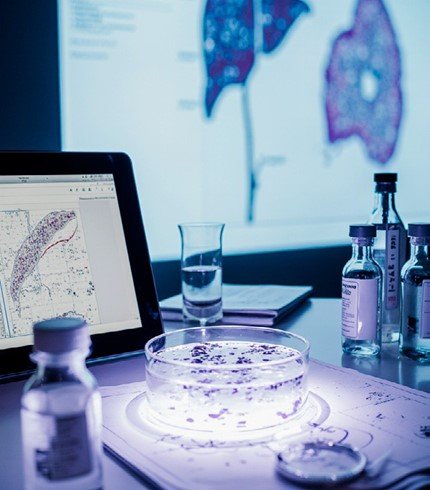
One of the two things I have to sacrifice». And her work is sedentary. But of course, the only thing they recommend is «exercise». As if that were so easy. She needs to move, yes, because it helps to improve her symptoms. But she also needs her doctor to understand that she can’t do everything. I suggested something that I think works for everyone: keep a calendar where you write down, by hours, what you do for two or three days. When you go to the doctor’s office, show it to him: «This is what I do, this is what I rest, this is what I sleep, this is my real life». It’s a way of showing fatigue in an objective way.
There is a doctor I admire very much who recommends that, before every consultation, we print out a diagram of the human body and mark on it what has hurt us, when, how… if we have had a headache, joint pain, intense fatigue. Even if the liver doesn’t hurt (which it doesn’t), it helps us to situate and reflect on how we are doing. Going to the consultation prepared is key.
I think we lack education as patients. We lack training to be able to communicate better how we feel. If we all prepared ourselves well before seeing the doctor (who already has very little time to see us), we could help him or her a lot. And the doctor would also be able to assess how we really are.
It is important to be able to collaborate, get to know each other and work together for a common cause: the defence of patients, at a global level
How does ALBI Spain work with other European or international organisations to support patients with inflammatory liver diseases? What opportunities exist to strengthen global collaboration in research, diagnosis and access to orphan treatments?
EA: ALBI Spain collaborates with different international organisations. For example, we work with the PBC Foundation, participating in working groups within the European network ERN RARE-LIVER. We also collaborate with patient associations in the United States, especially in the field of advocacy and in the translation of content into Spanish to facilitate its dissemination in Spanish-speaking countries. We highly value the potential of language as a tool for cohesion and access.
We are part of the Spanish Federation for Rare Diseases (FEDER), together with the National Federation of Liver Patients and Transplant Recipients (FNETH), and we also actively participate in ELPA (European Liver Patients’ Association). In addition, we are involved in the creation of a new European federation of associations focusing on rare liver diseases, which is taking its first steps this summer. Although I don’t remember their exact acronym now, we have already started working with them.
In terms of treatment development and patient advocacy, we also collaborate with the pharmaceutical industry. We want to be informed about how the processes are progressing and to be able to bring in the patient perspective from the beginning. At the European level, we are in contact with associations in Portugal and Italy. There is a very positive relationship between organisations, and we are always willing to support each other in any way we can.
I believe that ALBI Spain is positioning itself very well at the European level, and this will open many doors for us in the future. But beyond that, the important thing is to be able to collaborate, get to know each other and work together for a common cause: the defence of patients, at a global level.
Of course, there are differences between countries. The UK, for example, has a very strong federation for diseases such as primary biliary cholangitis. We continue to work closely with them, although their situation is different because they are outside the European Union. They still use the second-line treatment that is no longer available here. As you can see, there are nuances and inequalities, but within Europe we are increasingly united. And that is great news.
Our aim is to work for the diseases we support, and we do that as best we can
Finally, what challenges do you see as priorities in the short and medium term in addressing this and other rare liver diseases, especially in relation to therapeutic innovation and access models that ensure equity at a global level?
EA: The first thing we need is clear, accessible and up-to-date information. And second (but not least), research. We cannot stop research. In the minority diseases that we at ALBI support, there are many that are barely known, or that have not progressed for decades. And this cannot continue.
We also need visibility. Doctors must play an active role in helping us to make these diseases visible and to accompany people who, for a long time, have felt alone. Knowing that there are more people like you is comforting and empowering. That is why we must continue to research and raise awareness, again and again.
There are diseases such as autoimmune hepatitis that have been treated with the same drugs for more than 30 years. What if there was something better? We have to keep looking. Also in primary sclerosing cholangitis, a disease that often leads directly to transplantation. We know how to do transplants, but shouldn’t we consider how to avoid them in the first place?
Progressive familial hepatic cholangitis is a very tough paediatric disease, although adults are also diagnosed. Caroli syndrome, for example, has only four or five people diagnosed in Spain. We need people to talk about it, for all hepatologists to know that it exists, and if they know of a case, they can share their experiences. The same happens with Alagille syndrome, which is also a childhood disease and which, although it can be treated, in many cases leads to a transplant. These are genetic diseases, many of them ultra-rare, which are still being researched little by little, and which need to be named. Because if they are not named, they do not exist.
As an association, our role is to raise awareness, support patients, and dedicate all the resources at our disposal to this cause. We collaborate with whoever wants to collaborate, and we give everything we can. But we must not forget that we are volunteers… and we are also patients. And that is hard. Because, in addition to the work, we also carry our own itch, our own fatigue, our own «I can’t take it anymore» days. Most PBC patients suffer from fatigue or itching. It is true that some patients do not develop these symptoms and I wish we were all equally well. But many patients have no cure and continue to deal with chronic symptoms every day. That is why it is so important to strengthen research and visibility. We are linked to FEDER and EURORDIS, and we are also part of Orphanet. Our aim is to work for the diseases we support, and we do that as best we can.




